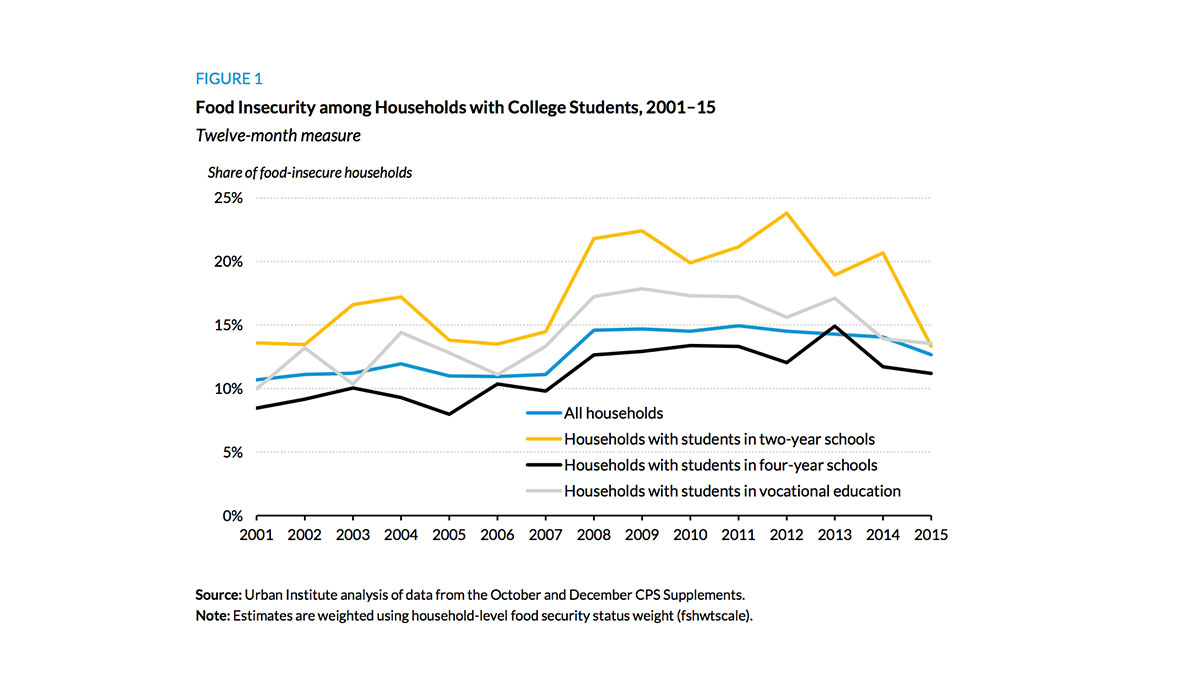A recent Urban Institute study finds that students at two-year colleges are at risk of food insecurity. The study does not demonstrate a causal relationship between higher education and food insecurity. Instead, it paints a concerning description of the vulnerability that a particular category of students face.
College students tend to come from high-income families and generally have a lower rate of food insecurity. Eleven percent of households with four-year college enrollees experience food insecurity. However, the percentage of households with students in two-year schools experiencing food insecurity tends to be higher than the national average for all households.
Insecurity is exacerbated when the economy is poor. In the period after the recession from 2008 to 2014, these households had average rates of food insecurity of 21.1%, peaking at 23.8% in 2012. In 2015, the rate dropped to 13.3%, still a little bit above the national rate. African American students enrolled in two-year colleges have a 28% rate of food insecurity.
However, the percentage of households with students in two-year schools experiencing food insecurity tends to be higher than the national average for all households.
The study did not find any significant difference for two-year enrollees for public or private institutions or whether the students are part-time or full-time. Vocational students also had high rates of food insecurity in the period after the 2008 recession.
Food insecurity has profound impacts on college students. It has been “associated with poor health, poor academic performance, and mental health symptoms such as depression and anxiety.” Better supports and resources are needed on college campuses to aid any students experiencing food insecurity.
One proposal is to review the work requirements for eligibility for Supplemental Nutrition Assistance Program (SNAP). Eligibility and enrollment in SNAP with colleges students are low. There are certain circumstances when students are eligible such as, being under the age of 18 years, over 49 years, taking care of a child under the age of 6, if they work at least 20 hours a week, or they receive work-study funds. The Federal Work-Study funds are typically found at institutions with a high percentage of students coming from families with incomes of $60,000 or higher. A student must work 20 hours to be eligible when working off-campus. Thus, the authors of this study conclude that one way to help more vulnerable students gain access to SNAP would be to lower the number of hours required to work off-campus for eligibility.
Databyte via Kristin Blagg, Craig Gundersen, Diane Whitmore Schanzenbach, and James P. Ziliak, Assessing Food Insecurity on Campus. Urban Institute.













